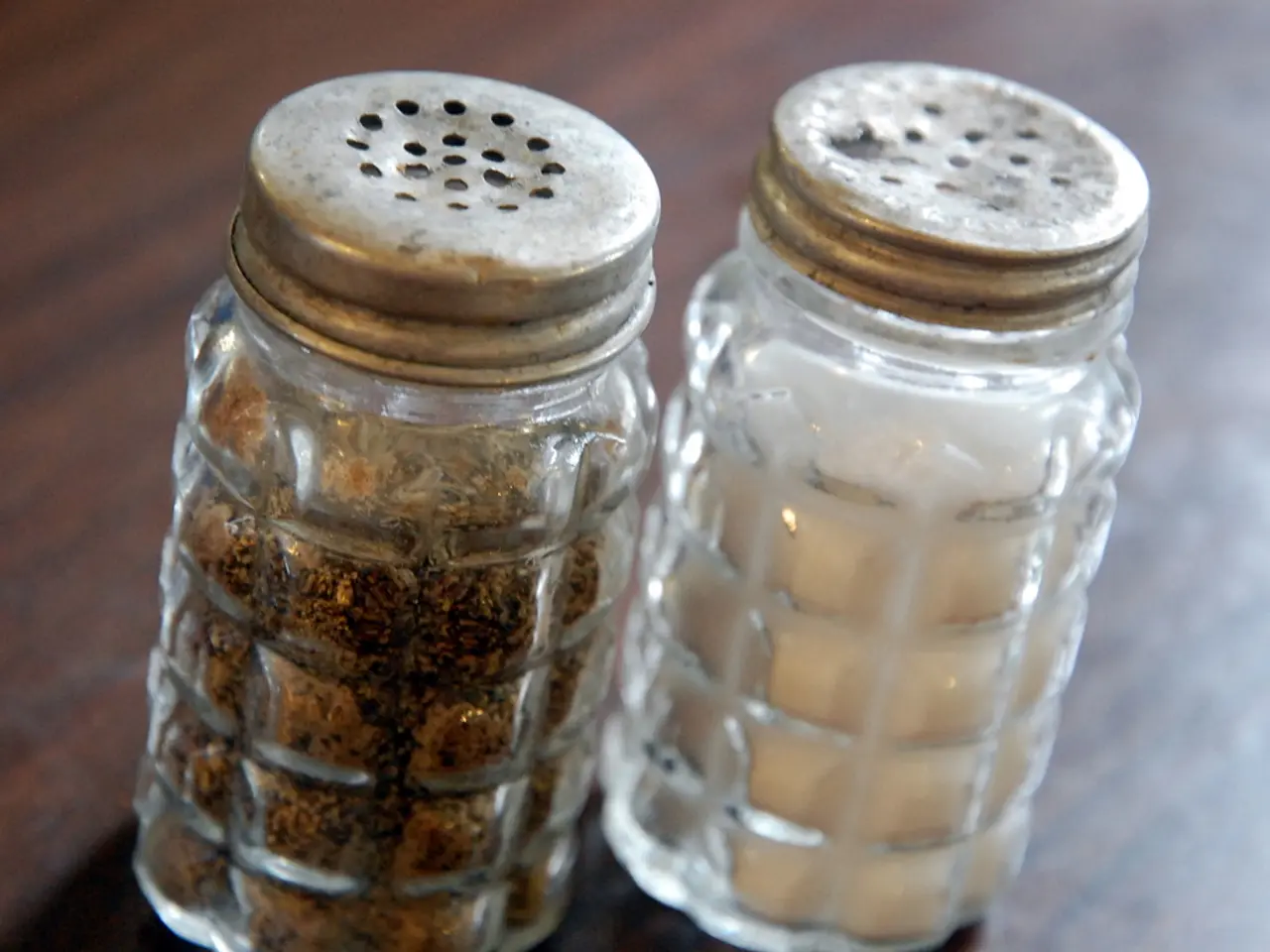Researchers witness 'salt creep' phenomenon at the individual crystal level in scientific studies
In a groundbreaking discovery, researchers at MIT.nano have visualized the previously unseen phenomenon of salt creeping at a single-crystal scale beneath a liquid's meniscus. This finding, published in the journal Langmuir on June 30, could have significant implications for water scarcity, art conservation, and infrastructure design.
The research, led by Joseph Phelim Mooney, delves into the fundamental aspects of salt crystallization at the air-liquid-solid interface. Using in situ X-ray microscopy, Mooney and his colleagues observed a single salt crystal pinning itself to a surface, initiating a chain reaction of growth. This recursive mechanism, which had not been visually documented before, provides a new understanding of surface fouling, material degradation, and controlled crystallization.
One key application of this research is in the field of water scarcity and desalination. By understanding how salt crystals nucleate and climb surfaces under liquid menisci, the insights gained can inform membrane design and anti-fouling strategies, potentially improving the efficiency of separating salt from water sources.
In the realm of art conservation, the research offers valuable insights. Salt damage is a significant threat to heritage materials, such as ancient murals. By visualizing salt creeping, the researchers can help conservators devise methods to inhibit or control salt crystallization, thereby preserving artworks more effectively.
The research also has implications for infrastructure design. Salt creeping can cause damage by depositing and spreading salt crystals on building materials and surfaces. Understanding when, why, and how it begins allows engineers to design longer-lasting infrastructure by selecting materials or coatings that resist salt-induced degradation.
Moreover, the findings may support emerging climate technologies that rely on smart control of evaporation and crystallization. The new research may also enable better control of crystallization processes in zero-liquid discharge systems for salt removal.
The paper, titled "In Situ X-ray Microscopy Unraveling the Onset of Salt Creeping at a Single-Crystal Level," is available in the journal Langmuir. This research represents a significant step forward in understanding and controlling the salt creeping phenomenon, with potential applications spanning from mineral extraction and desalination to art conservation and infrastructure design.
References: - [2] Phys.org: Salt crystals creeping beneath liquid meniscus and implications (July 31, 2025) - [4] Aegean.com/MIT news summary on salt creeping (July 31, 2025) - [3] Royal Society Open Science: Mathematical models of crystal defects (July 16, 2025) - [1] Phys.org: High-quality crystals in MOF research (August 1, 2025)
- The discovery of salt creeping at a single-crystal scale beneath a liquid's meniscus, researched by Joseph Phelim Mooney and his colleagues at MIT.nano, could potentially revolutionize various fields, as published in the journal Langmuir on June 30.
- In water scarcity and desalination, the insights gained from this research could lead to improved membrane designs and anti-fouling strategies, enhancing the efficiency of separating salt from water sources.
- For art conservation, understanding salt creeping could help conservators develop methods to inhibit or control salt crystallization, preserving artworks more effectively.
- Engineers, in the realm of infrastructure design, might utilize this research to design longer-lasting infrastructure by selecting materials or coatings that resist salt-induced degradation.
- This research could also support emerging climate technologies that smartly control evaporation and crystallization, possibly benefiting zero-liquid discharge systems for salt removal.
- Beyond traditional science fields, this research could have applications in environmental-science, technology, education-and-self-development, and even space science, expanding the horizon of human knowledge.
- The paper's title, "In Situ X-ray Microscopy Unraveling the Onset of Salt Creeping at a Single-Crystal Level," exemplifies the transformative potential of Mooney's research, available to read in the journal Langmuir, with additional resources such as [1], [2], [3], and [4] offering further insights.




